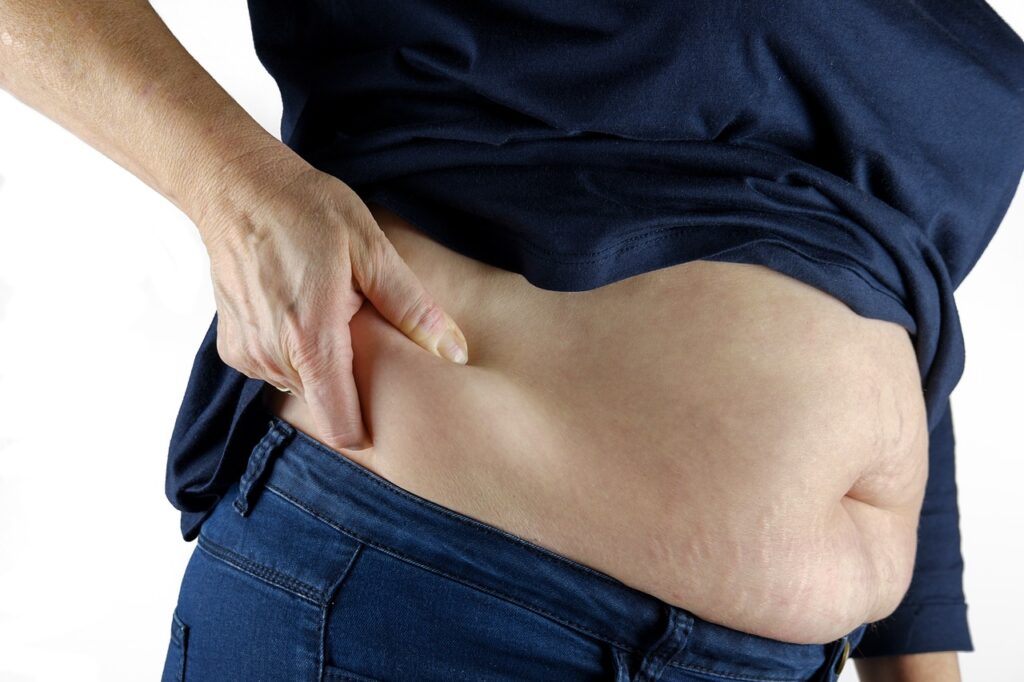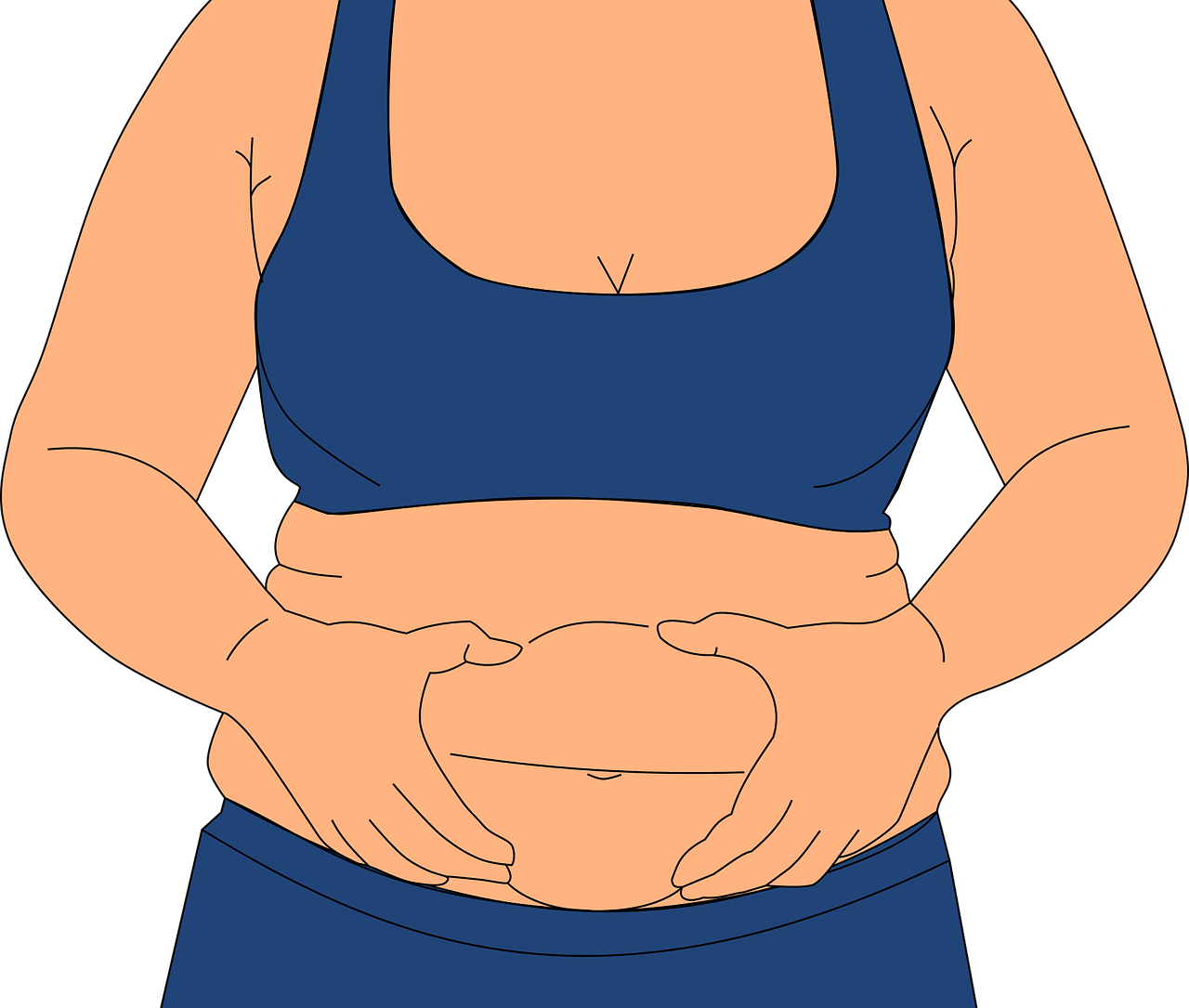Table of Contents
The Best Diet & Exercise for Stubborn Belly Fat
Struggling with stubborn belly fat? You’re not alone. Many people find it tough to shed those extra pounds around their midsection. But don’t worry – there are ways to tackle this problem that you might not have tried yet.

Let’s start by looking at what belly fat really is. It’s not just the stuff you can pinch under your skin. The real trouble lies deeper, around your organs. This kind of fat can mess with your liver and make it harder for your body to use insulin properly. When that happens, losing weight becomes even more challenging.
Key Takeaways
- Belly fat is more than skin deep and affects your organs
- Your body’s response to insulin plays a big role in fat storage
- A mix of smart eating, good sleep, and the right exercise can help you lose belly fat
Belly Fat Explained
Different Types of Fat
Your body has two main types of fat. The first is subcutaneous fat, which sits just under your skin. You can pinch this kind of fat. The second type is visceral fat, also called belly fat. This fat is deeper in your body, around your organs. It’s harder to see and feel, but it can be more harmful to your health.
Hidden Fat and Your Health
Belly fat doesn’t just stay in your belly. It can also build up in your liver and other organs. This is called ectopic fat. When you have a lot of belly fat, you likely have fat in your liver too. This can cause problems with a hormone called insulin.
Insulin helps your body use sugar for energy. But too much belly fat can make your body less sensitive to insulin. This is called insulin resistance. It can lead to more fat storage and make it harder to lose weight.
Your liver can also start making extra sugar on its own when you have insulin resistance. This creates a cycle where your body keeps making and storing more fat.
To lose belly fat, you need to focus on your liver health and insulin levels. Simple exercises like sit-ups won’t fix the problem. You need a plan that targets the root causes of belly fat.
Common Mistakes When Trying to Lose Belly Fat
You might be making some errors in your approach to getting rid of stubborn belly fat. Let’s look at what doesn’t work and why.
Spot exercises like sit-ups and crunches won’t target belly fat directly. Your body doesn’t burn fat from specific areas just because you work those muscles.
Many diets fail to address the real issue – fat in your liver. Belly fat is linked to liver fat, so you need to focus on reducing fat there too.
Ignoring stress can sabotage your efforts. High stress levels boost cortisol, which can lead to more belly fat storage. Try to manage stress through:
- Long, easy walks
- Yard work or housework
- Getting enough sleep
Overtraining is another pitfall. While exercise helps, too much can increase stress. Aim for 2-3 high-intensity workouts per week with rest days in between.
Skimping on sleep makes weight loss harder. Your body needs good sleep to balance hormones and burn fat effectively.
Failing to get into ketosis might slow your progress. Your body can burn fat for fuel in two ways:
- Using your own body fat
- Using dietary fat
To tap into stubborn belly fat, you need to encourage your body to burn fat for energy instead of relying on carbs.
Your Hormones and Belly Fat
Insulin’s Fat-Storing Power
Insulin plays a big role in storing fat. It’s a hormone that tells your body to keep fat, making it hard to lose weight. When you eat carbs and sugars, your body makes more insulin. But there’s a tricky part – your liver can make sugar too, even if you don’t eat any. This can lead to more fat storage.
The Insulin Resistance Loop
When you have too much belly fat, your body becomes less sensitive to insulin. This is called insulin resistance. Your body then makes even more insulin to try to fix this. It’s like a never-ending cycle:
- More insulin
- More fat storage
- More insulin resistance
- Repeat
This loop makes it really tough to lose that stubborn belly fat. Your body keeps storing fat, and it’s hard to break the cycle.
To fight this, you need to focus on your liver health and insulin levels. Exercise can help, but not just by burning calories. It’s more about using up energy and helping you sleep better. Good sleep is key because it lowers stress, which can also cause weight gain.
How Food Affects Your Insulin
Your diet plays a big role in how much insulin your body makes. Insulin is a hormone that stores fat. When you eat lots of carbs and sugar, your body pumps out more insulin. This makes it really hard to lose weight, especially around your belly.
Your liver can also make its own sugar, even if you don’t eat any. This happens more when you have insulin problems. It’s like a never-ending cycle – your liver makes sugar, which turns into fat, which causes more insulin issues.
To fix this, you need to focus on your liver. The fat in your liver spills over into your belly area. Getting rid of liver fat is key to losing belly fat.
Here are some tips to help:
- Cut back on carbs and sugar
- Get enough sleep
- Manage your stress
- Do some exercise
Walking is great for stress. It can help you sleep better too. Try going for long, easy walks or doing chores around the house.
You can also do some high-intensity workouts. This could be:
- Sprinting up hills
- Using a spin bike
- Lifting weights
These workouts make your body use up more energy. This can help burn the fat around your middle. Just be careful not to overdo it – too much exercise can stress your body out.
Remember, diet is super important. You can get your body to burn fat by eating the right foods. This puts you in a state called ketosis. There are two ways to get ketones (fat fuel):
- From your own body fat
- From the fat you eat
By making these changes, you can help your body deal with insulin better and start losing that stubborn belly fat.
Getting Rid of Stubborn Belly Fat
Managing Stress and Cortisol
Stress can make it harder to lose belly fat. When you’re stressed, your body makes more cortisol. This hormone can lead to weight gain, especially around your middle. To fight this, try going for long walks. Walking helps burn off stress hormones and can calm your mind. Aim for low-intensity, longer walks rather than short, fast ones. You could also do some easy work around the house. These activities can take your mind off stressful thoughts and help you relax.
How Exercise Helps Make Energy
Your body’s energy factories are called mitochondria. They turn food into a fuel called ATP. When you exercise, your body makes way more ATP than when you’re resting. High-intensity workouts can boost ATP production by a lot. Try things like:
- Sprinting up hills
- Using a spin bike
- Lifting weights
Do these intense workouts 2-3 times a week. Don’t overdo it, though. Too much exercise can stress your body out. Make sure to rest between hard workouts.
Why Sleep Matters for Losing Fat
Sleep is super important when you’re trying to lose belly fat. Here’s why:
- It helps lower stress
- It lets your body make growth hormone, which burns fat
- It helps you recover from workouts
If you’re not sleeping enough, it’ll be really hard to lose weight. Your body will keep making cortisol, which makes it tough to burn fat, especially around your middle. Try to get enough sleep every night to help your body burn fat better.
Boosting Your Workouts with High-Intensity Interval Training
High-intensity interval training (HIIT) can be a game-changer for burning stubborn belly fat. This workout style involves short bursts of intense exercise followed by brief rest periods. It’s a great way to kick your fat-burning into high gear.
To start HIIT, pick an exercise you enjoy. Running, cycling, or bodyweight exercises all work well. Push yourself hard for 30 seconds, then rest for 30 seconds. Repeat this pattern for 15-20 minutes.
HIIT workouts are tough, so don’t overdo it. Aim for 2-3 sessions per week. This gives your body time to recover between workouts. Recovery is key for seeing results and avoiding burnout.
One big perk of HIIT is that it boosts your metabolism. Your body keeps burning calories even after you finish exercising. This helps target that tricky belly fat.
Remember, exercise is just one piece of the puzzle. Pair your HIIT workouts with good sleep and stress management. These habits work together to help you reach your goals faster.
To maximize fat loss, combine HIIT with longer, low-intensity activities. Go for walks or do light housework on your off days. This mix keeps your body guessing and burning fat around the clock.
Keeping Your Workouts Balanced
Don’t push yourself too hard when exercising. Working out too much can actually hurt your progress. Stick to high-intensity workouts 2-3 times a week at most. This gives your body time to recover between sessions.
Mix up your routine with different activities. Try hill sprints, spin bikes, or weightlifting to work your whole body. These exercises make your body use more energy, which taps into fat stores.
Listen to your body. If you feel worn out, take an extra rest day. You’ll get better results by letting yourself fully recover. Overtraining can raise your stress levels and make it harder to lose weight.
Balance intense workouts with gentler exercise. Take long walks or do physical chores around the house. This helps burn off stress hormones without putting too much strain on your body. It can also improve your sleep, which is key for weight loss.
Remember, exercise is just one piece of the puzzle. Getting enough sleep and managing stress are just as important for losing belly fat. Make sure you’re giving your body what it needs to succeed.
Cutting Belly Fat Through Ketosis
Making Ketones Work for You
Ketones are your body’s fat-burning superstar. When you eat less carbs and more fat, your body shifts into ketosis. This means it starts burning fat for fuel instead of sugar. Your liver turns fat into ketones, which your body can use for energy. This process helps you burn stubborn belly fat.
To get into ketosis, you need to cut way back on carbs. Aim for less than 50 grams a day. Fill up on healthy fats like avocados, nuts, and olive oil instead. It may take a few days, but soon your body will start making ketones and burning fat.
Getting the Right Amount of Fat
You might think eating more fat would make you gain weight. But in ketosis, fat becomes your main fuel source. Still, you need to be smart about how much fat you eat.
Too little fat, and you’ll feel hungry and tired. Your body won’t have enough fuel. But too much fat can slow down weight loss. You want to eat just enough to feel satisfied and energized.
A good rule of thumb:
- 70-80% of calories from fat
- 15-20% from protein
- 5-10% from carbs
Track your food for a few days to see if you’re hitting these targets. Adjust as needed to find what works for you. Remember, everyone’s body is different. What matters most is how you feel and the results you see.

